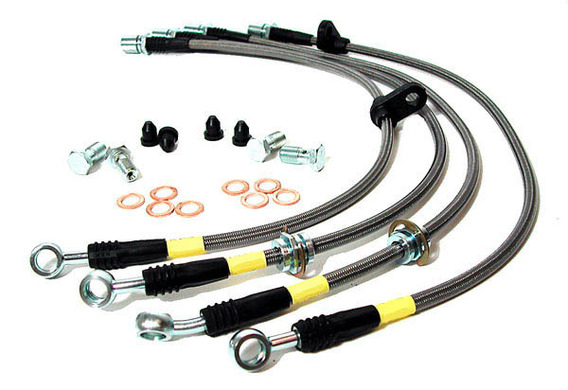
A reliable braking system is the basis of safe driving. Those who do not seem sufficiently reliable to the staff braking system come to the aid of modern technology. One of the most popular types of brake system today is the fitting of reinforced brake hoses to replace the original brake hoses.
Conventional brake hoses are made of rubber, and reinforced with a two-ply structure: inside a tube from a polytetrafluoroethylene (sometimes modified rubber), and the top is a steel sleeve. There are reinforced hoses, which are additionally covered by an extra layer of plastic.

Advantages of reinforced brake hoses
The reinforced hose has a number of advantages over normal rubber hoses:
- The inner layer of PTFE is more resistant to aggressive fluids. In addition, it does not completely skip the air or liquid to ensure that the braking system is airtight.
- The materials of the reinforced brake hoses do not lose their properties in the range of temperatures ranging from -70 to +270 degrees.
- The steel "shell" retains the continuous section of the brake hose at increasing pressure. Thus, the braking performance shall be increased.
- Arminated brake hoses are free from corrosion, and their service life is increasing.
Should I change the conventional brake hoses to the reinforced?
The numerous advantages of reinforced brake hoses do not necessarily mean that they must be placed on every vehicle. The most commonly used number of brake hoses for the daily operation of the vehicle is that they are perfectly able to carry out their functions. However, there are a number of conditions in which the specialists recommend that the reinforced brake hoses be supplied.
- After installing a new brake system with a higher pressure in the vehicle. The regular brake hoses may simply fail.
- If the vehicle is being operated in severe weather conditions.
- If the car is racing.
- If the driver prefers a dynamic and aggressive driving style.







